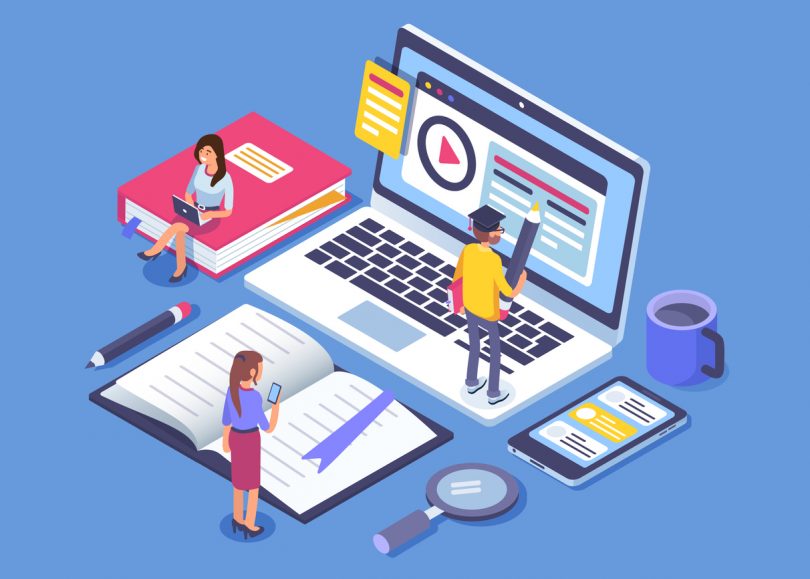Education these days, along with many other areas of life, has become an open and widely available space. It has become much easier for anyone to apply to literally any school in the world. Therefore, it brings numerous challenges to the world of academia including bias, discrimination & accessibility.
For many decades educators around the world have been molding the principles of fair assessment to best recognize the needs and knowledge of every learner. But unfortunately, due to the topic being so extensive and vague, the principle of fair assessment had never turned into a single unified set of rules for every educator to follow. There are multiple “codes of honor” created by educators for educators, usually within particular schools or districts. When pooled, educators seemed to very much disagree on the nuts and bolts of fair student assessment.
As a result, educators resort to a variety of approaches that seem both ethical and fitting best into the institution’s ecosystem. Technology plays a very important part in helping educators grade learners’ work fairly. Many educational institutions spend between $75 and $250 per student per year on software, which creates a huge market of the $14 billion EdTech market in the U.S. alone. And for a good reason! Among the major benefits of the tech-powered assessment are easy detection of blind spots in education, improved feedback, recognizing the differences, and implementing customized learning principles.
Latest fair assessment practices that work
It is self-evident that every student deserves to demonstrate what they understand. This is why it’s important to remember that every student learns differently. The fair assessment approach is considered well-functioning if it doesn’t interfere with the main concept of fair assessment, which is to give equitable opportunities to demonstrate what they learned.
Despite the fact that teaching is predominantly about soft skills and communication, it is worth consolidating these with the numerous technology benefits. Implementation of the diverse assessment routines can minimize cases of inequality or prejudice.
The latest successful fair assessment practices represent the best of the two worlds, which are human and technology. Here are some of the benefits:
Allow flexibility
Utilizing various online platforms for assessment provides flexibility to learners to choose the time and place that best suits their learning style. The only thing they’ll need is an internet-ready gadget. This approach has become increasingly popular due to its potential to minimize discrimination based on linguistic background, physical or learning abilities. Every student can access a cloud-based platform from the appropriate device and complete the assessment in a comfortable manner. There are numerous assessment platforms available on the market that are easy to launch and use.
Cater to diversity
The way a question gets asked matters, and the medium that is chosen to demonstrate what’s learned matters even more. To negate the difference in students’ perception, it’s crucial to wrap tests and assignments in different shapes and sizes. Multiple online apps can do things like help gamify quizzes and tests in minutes or transform videos into interactive lessons. Audio and video tools will help students present their knowledge through a habitual medium. All of these can not only open up the maximum potential of every learner but will also remove assessment bias based on the learning style of every person.
Make data-driven decisions
It is hard to overestimate the importance of data hidden behind grades. In fact, having that concealed information at hand can significantly change the perspective of every educator and therefore bring more integrity to the assessment process. Given that instructors don’t have even an extra minute for data crunching, software solutions can help out here as well. One solid example is checking the students’ written and coding assignments. Software like the Unicheck plagiarism detection tool integrates into every Learning Management System and provides a fully automated extensive scanning of every submitted student assignment.
As a result, the educator has a comprehensive similarity report right in the LMS. It covers similarities found across the Internet, numerous academic databases and institution’s own library. Also, digital cheating attempts like character replacement are marked and authorship verification conclusion is included.
This tool gives enough facts about the originality of each assignment for the instructor to consider when grading. It also eradicates the chance of bias by giving cold facts on the required properties of the work. What’s more, this particular tool acts not only as an assessment assistant but also as a self-learning instrument giving students the opportunity to self-check their works prior to submission.
Provide regular personalized feedback
The most common educator’s feedback (a number) does not provide any information about the strengths and weaknesses of the student. Continuous verbal and written feedback instead, is a great tool to engage students. It can spark their interest and be able to adjust learning routines. Regular feedback, whether individual or in groups, aids in giving equal learning opportunities to every student. Technology serves as a tool to locate the feedback right in the epicenter of learning.
The bottom line
In the area of fair student assessment, technology helps shape the future of education by effectively depersonalize grading decisions, minimize human factors, and at the same time provide a robust base for the unbiased assessment. What’s more, technology brings to life widely accessible platforms that supply all groups of learners with equal educational tools.
For more great info related to all things college, check out the other blogs on College Basics.







